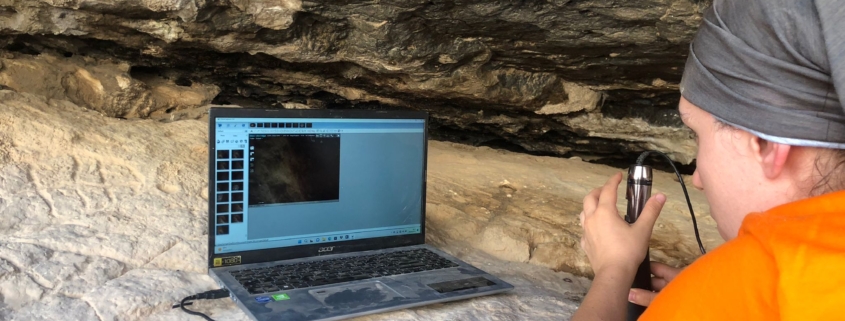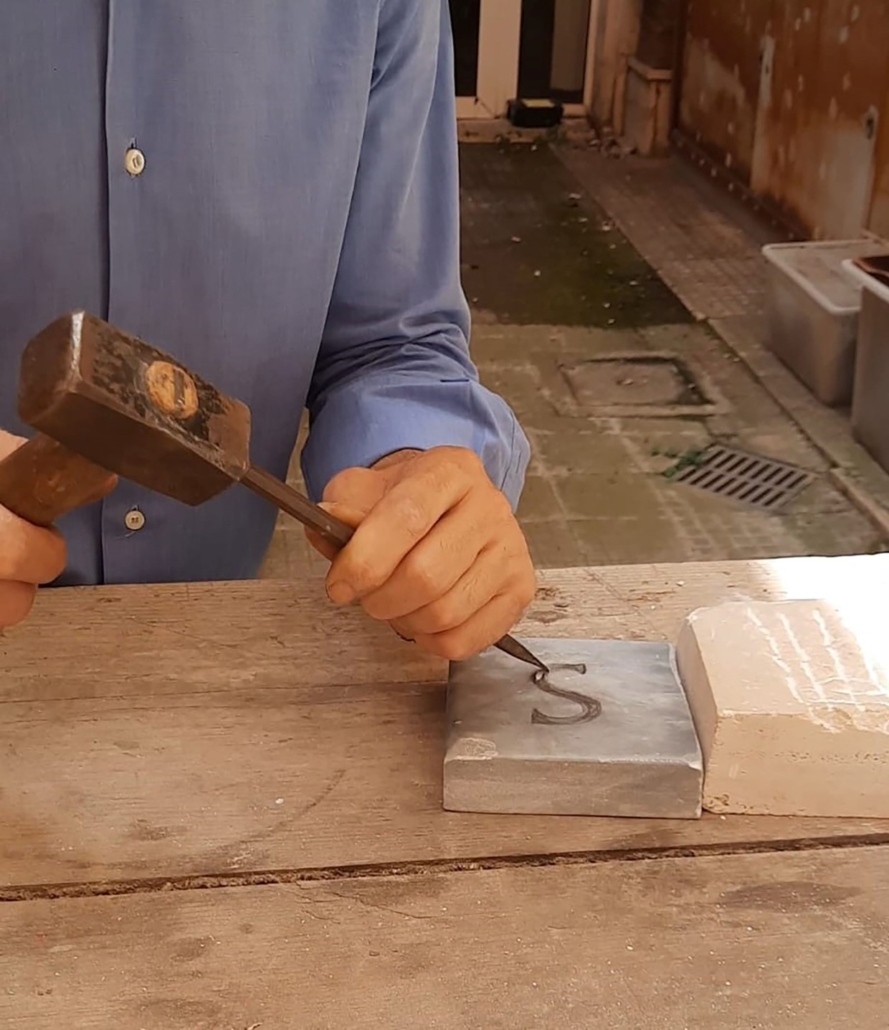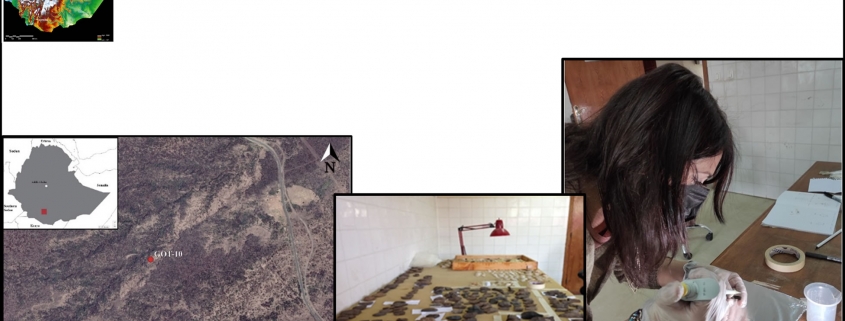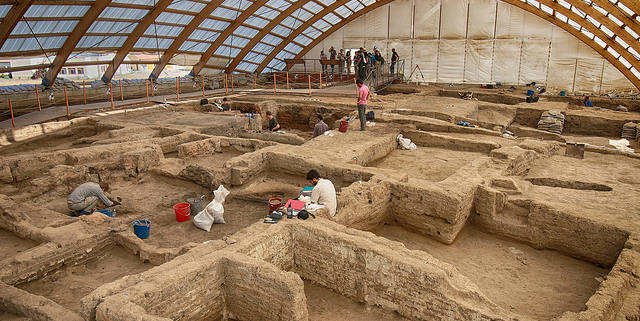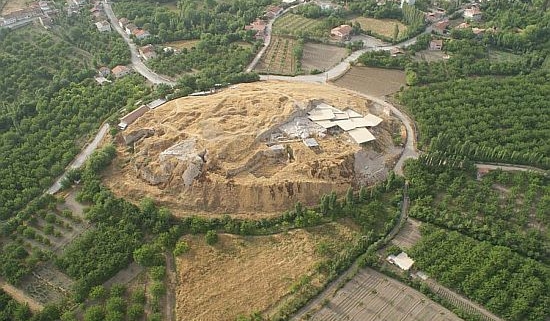Project director: prof. C. Lemorini, Sapienza University of Rome
PNRR Project – Cross-disciplinary interpretation of data from novel diagnostics and definition of multi-method protocols for the study of Cultural Heritage
LTFAPA is part of a larger project funded by the Next Generation EU for the Italian National Recovery Plan, PE5 CHANGES, Spoke 5 (Science and Technologies for Sustainable Diagnostics of Cultural Heritage). The project, initiated in April 2023, falls within WP6 ‘Cross-disciplinary interpretation of data from novel diagnostics and definition of multi-method protocols for the study of Cultural Heritage.’
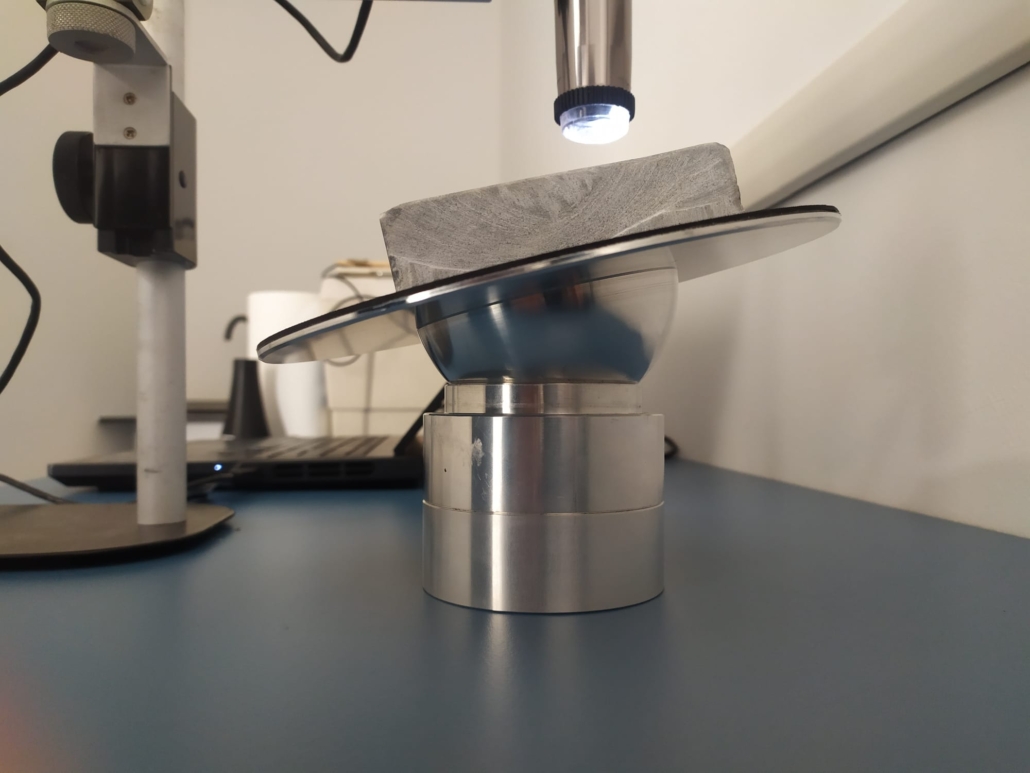
Specifically, the thematic focus revolves around the development of interdisciplinary protocols for architectural and archaeological diagnostics, aiming to experiment and produce innovative methods for documenting technological traces in the field. The main objective is to structure a non-invasive integrated methodology, with a diagnostic approach applicable to the widest possible range of cases. Emphasizing various interpretative levels, ranging from macroscopic to mesoscopic and microscopic analysis, ongoing work involves analyzing construction techniques of structures, decorative elements, artistic signs, graphic symbols, and production techniques of objects based on the imprints left by these techniques on processed materials.
These technological traces, associated with shared tools and gestures, are observable at different magnifications using optical, digital, and confocal instrumentation. In addition, the possibility of performing surface analyses and quantifications through micro-topographic analysis software is being tested.
These methods are being tested on various sample contexts reflecting a wide chronological range, from Prehistory to the Post-Classical period, and on different types of materials including lithic, ceramic, metallic, paintings, and plasters
In this initial phase of the project, the focus has been on the analysis of stone, with particular attention to the examination of epigraphs. For the traceological study of these, an experimental comparison collection was thus created. For example, the advancement in utilizing portable digital microscopes for micro-photogrammetry has played a crucial role in establishing new documentation protocols for fieldwork on mesoscopic and microscopic scales. A primary objective is to outline the particulars of this micro-photogrammetric approach and concentrate on evaluating its potential, advantages, and the level of detail attainable in the field of traceology, with a particular focus on on-site documentation. To achieve this goal, we are conducting various tests in the field and in the laboratory, considering the different environmental and logistical conditions commonly encountered in the context of the archaeological documentation of technological traces.
To test these methodologies, we are working on various archaeological sites affiliated with Sapienza University of Rome: the medieval town of Cencelle; the Basilica of the Holy Sepulchre in Jerusalem; two rock art sites in southern Ethiopia; the Ranaldi Shelter in Filiano (PZ); the rock sites in the Shaykh Kheder area in Kurdistan; the northeastern slopes of the Palatine Hill (Archaeological Park of the Colosseum); and the necropolis of Castel Sozzio (VT).
References
Previti, G., Luci, B., Lemorini, C., 2024. Micro-photogrammetry and traceology: new on-site documentation approaches by the use of portable digital microscopes. In Journal of Archaeological Science. Under review
Previti, G., Di Lello, C., Lemorini, C. Digital techniques for acquiring pottery surfaces: comparing methods for analysing technological traces and imprints on experimental reference collections. Abstract for EAA Conference 2024 (Rome, 28 – 31 August), Session #857 ‘Persistent signs on surfaces: the innovative use of Visual Archaeology techniques in investigating voluntary and crafting marks’ (main organiser G. Previti).
Lemorini, C., Previti, G., Luci, B., Kusumastusi, S., Di Lello, C. Tracce, Tecnologia, Artigianato: protocolli di micro-fotogrammetria speditiva per lo studio delle tracce di produzione di strutture, iscrizioni e oggetti lapidei. Preliminare applicazione anche a superfici ceramiche. Evento di presentazione dello Spoke 5 “Science and Technologies for Sustainable Diagnostics of Cultural Heritage” (PE5 CHANGES del PNRR) e dei bandi a cascata (Napoli, 20-21 febbraio 2024).
Sites excavation director: E.E. Spinapolice, Department of Classics, Sapienza University of Rome
LTFAPA project: use-wear and residues analyses of chipped stone tools of the Area of Gotera
The area of Gotera, southern Ethiopia, is characterized by strong evidence of human occupation referred to the African Middle Stone Age (MSA).
It was discovered by Jean Chavaillon in the late 70’s, and since 2016 University of Rome La Sapienza is carrying out newly excavation and survey activities in the area. The aim of this research is the reconstruction of settlement dynamics and exploitation strategies of human groups during the Late Pleistocene in an area poorly analysed.
During four field seasons conducted in 2018, a high concentration of archaeological materials (both lithics and fauna) has been found and recorded in surface in an area of 2km2 and the discovery of the GOT-10 site in 2018 provided an archaeological sequence in a primary depositional context, yielding faunal remains, lithic implements, and structured fireplaces.
Systematic studies have been conducted and are still ongoing. The results will allow to improve our knowledge concerning the adaptation / evolution of the first representatives of our species in this area. Furthermore, is an important reference point to better understand population structures in East Africa during a period characterised by strong climatic oscillation.
LTFAPA lab is part of the team, and it is in charge of residue analysis and use wear analysis on the lithic assemblage from the stratigraphic context of GOT10.
Neolithic levels, Turkey
Site excavation director 1993-2018: prof. I.Hodder, Stanford University
Chipped stone tools use-wear analysis
Çatalhöyük is a well-known site located in Central Anatolia that was occupied for 2,000 years; the Neolithic East Mound dates from 7400 BCE to 6000 BCE and the Chalcolithic West Mound covers the first half of the 6th millennium BCE. The Pottery Neolithic village extends over many hectares suggesting a dense population in ancient times. The Neolithic village is especially known for the evidences of rituals and symbolism expressed by burials, wall paintings and mural art. Çatalhöyük is a key site for understanding the social and economic change that characterized the first farming communities of the Near East. A huge team of specialists, directed by J.Hodder, is working from many years to analyze the stratigraphy, the ecofacts and artifacts that form the site.
From 2013 the LTFPA is part of the Çatalhöyük research team with a research project aimed at understanding the social and economic role of chipped stone tools found in the Neolithic village using a use-wear approach. In particular, the project is focused on the study of the activities carried out inside and outside the buildings as a means for clarifying the role of different type of spaces in the social life of the village with a chronological perspective.
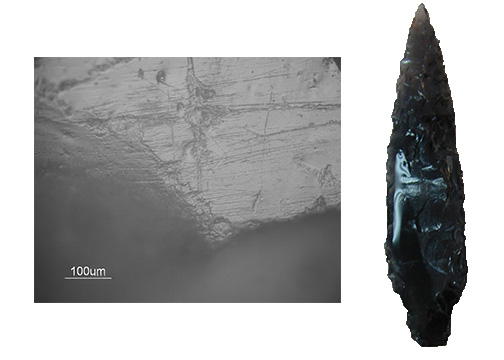
The chipped stone tools coming from the internal and external areas pertaining to various buildings from the North and South Areas of East Mound were studied or are under study. Generally, these lithic tools were used for a great variety of activities related to the processing of plants, animal, and mineral materials. Crafts activities related to the production of small stone objects, as beads or similar, are often present both inside and outside the buildings. The study of “special buildings” characterized by elaborated installations, as building 77, showed a lack of activities carried out in its spaces with lithic tools that confirms a different use than the domestic one ascribed toother buildings.
Related bibliography
Archive Reports 2013, 2014, 2015, 2017; http://www.catalhoyuk.com/archive_reports/
Lemorini C, D’Errico D., De Angelis A. Highlighting specialization in prehistoric societies with a use-wear approach Çatalhöyük, Central Anatolia (neolithic phases) and Arslantepe, East Anatolia (EbA phase) in comparison In R.Peake, S.Bauvais, C.Hamon, C.Mordant (eds.) Specialised productions and specialists, Proceedings of the session n° XXXIV-2 of the XVIII° UISPP World Congress, Société préhistorique française, 2020 (Séances de la Société préhistorique française, XXXIV-2), ISSN : 2263-3847 – ISBN : 2-913745-83-0DECEMBER 27, 2020
Torre della Chiesaccia, Casetta Mistici (Copper Age, Latium Italy)
References
Lemorini C. Caricola I., Nunziante Cesaro S. 2020 4.4. – Le punte foliate dai contesti funerari di Torre della Chiesaccia (Roma): analisi delle tracce d’uso e dei residui d’uso In G.Carboni, A. Anzidei (eds. ) Roma prima del mito. Abitati e necropoli dal Neolitico alla prima metà dei metalli nel territorio di Roma (VI-III millennio a.C.), pp. 437-444. Archeopress, Oxford. ISBN 978-1-78969-308-9
Caricola I, Lemorini C. 2020 4.6 – I pugnali litici da Torre della Chiesaccia e Casetta Mistici (Roma): analisi preliminare delle tracce d’uso In G.Carboni, A. Anzidei (eds. ) Roma prima del mito. Abitati e necropoli dal Neolitico alla prima metà dei metalli nel territorio di Roma (VI-III millennio a.C.), pp. 449-453. Archeopress, Oxford. ISBN 978-1-78969-308-9
Celant A. Lemorini C., Nunziante Cesaro S. 2020 4.5 – Analisi delle tracce d’uso e dei residui organici di una punta foliata dal corredo della tomba 8 di Casetta Mistici In G.Carboni, A. Anzidei (eds. ) Roma prima del mito. Abitati e necropoli dal Neolitico alla prima metà dei metalli nel territorio di Roma (VI-III millennio a.C.), pp. 445-448. Archeopress, Oxford. ISBN 978-1-78969-308-9
Metal Age metal industries recently studied at LTFAPA
References
Petitti P., Rossi F., Lemorini C., Pellegrini A. 2020 Le punte di lancia del lago di Mezzano (Valentano, VT): uno sguardo d’insieme Atti del XIV PPE 7-8-9 settembre 2018 Valentano, Pitigliano, Marciano.
Chalcolithic-Bronze Age, Turkey
Site excavation director: prof. F.Balossi-Restelli, Sapienza University of Rome
Chipped stone tools and macro-lithic tools use-wear and residues analyses
Moreover, LTFAPA is dealing also with the technological and functional study with traces analysis of the macro-lithic tools of the Arslantepe sequence, from Late Chalcolithic to Hittites Age. A PhD project (A.De Angelis PhD candidate Sapienza) is now focused on the macro-lithic tools of the village EBA VIB2 and their role in this community in both the domestic and the public spheres.
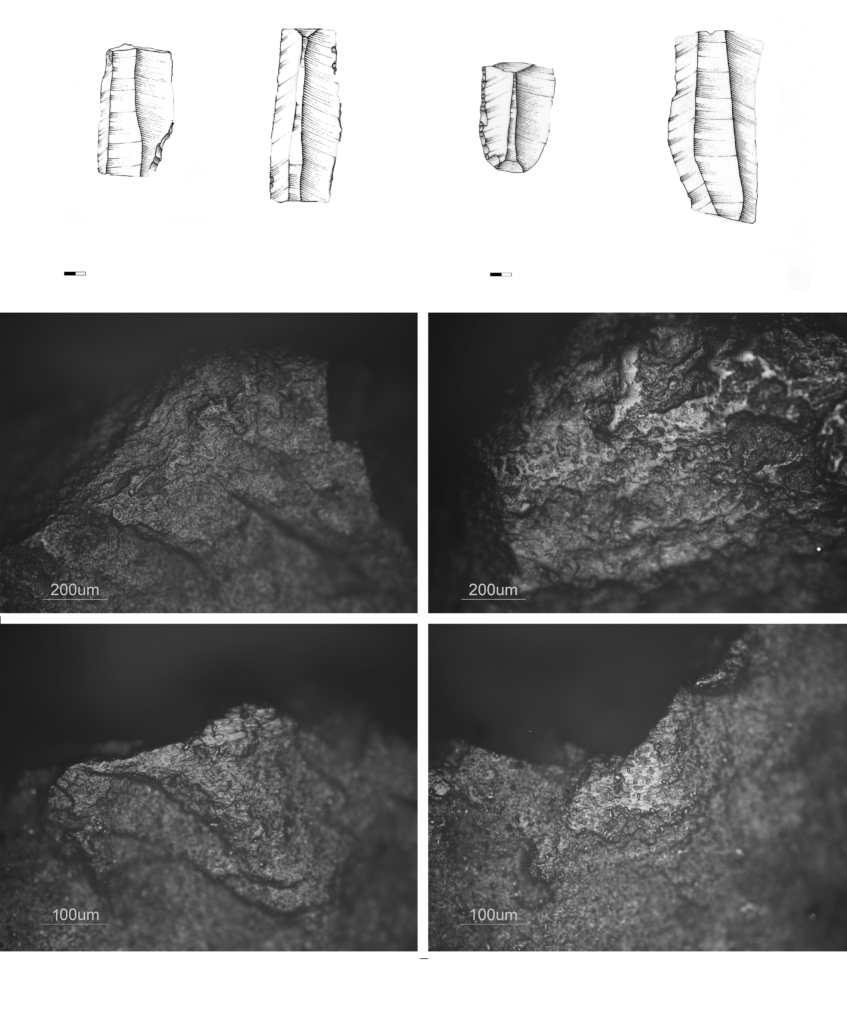
Another line of research was opened with three dissertations, respectively BA and MA dissertations on the production techniques of the stone beads from the Late Chalcolithic and Early Bronze Age levels of Arslantepe and a MA dissertation regarding the interpretation of the weaving techniques at Late Chalcolitic 5 VIA using an integrated approach of experimental archeology and traces analysis applied to the seals impressions on clay, “cretulae”, found in the storage areas of the administrative building. The weaving techniques were also investigated through the analysis of the spindle-whorls made of pottery and of bone found in various phases of the sequence of Arslantepe.
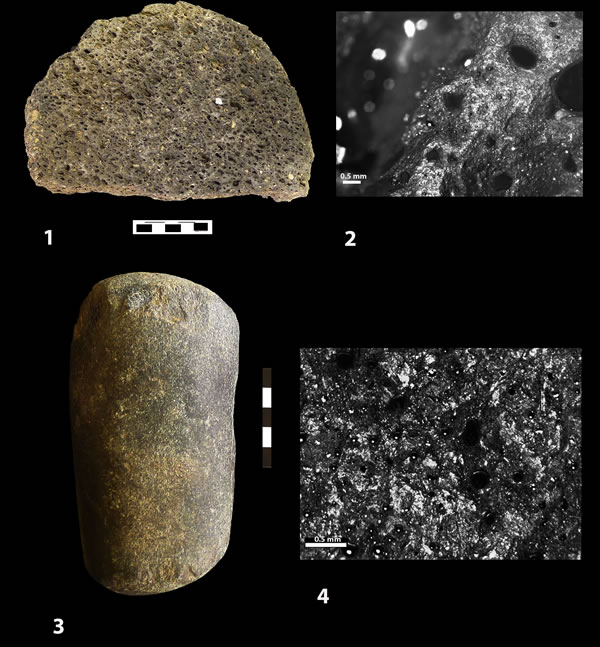
References
Laurito R., Lemorini C., Perilli A. (2014), Cap. 10, Making Textiles at Arslantepe, Turkey, in the 4th and 3rd Millennia BC. Archaeological Data and Experimental Archaeology. In: C.Breniquet, C.Michel (eds.), Wool economy in the ancient Near East and the Aegean. From the beginnings of sheep husbandry to institutional textile industry, Ancient Textile Series, vol. 17, Oxbow Books, Oxford, pp. 151-168.
Piccione, P.; Alvaro, C.; Bartosiewicz, L.; Lemorini, C.; Masi, A.; Sadori, L. 2015. Distribution of artifacts and ecofacts in an Early Bronze Age house in Eastern Anatolia: Space use and household economy at Arslantepe VI B2 (2900–2750 BCE). In Journal of Archeological Sciences Reports vol 4, pp. 8-22. http//doi:10.1016/j.jasrep.2015.08.035.
Balossi Restelli, F., Conati Barbaro C., Lemorini C., Mori, L., D’Errico D. 2017 Bread in Prehistory. Looking for the path of an extraordinary invention. In Manetti C. , Rufo F. (a cura di) Berad. An Interdisciplinary Perspective. Collana Sudi e Ricerche 57, Università di Roma Sapienza.
Lemorini C, D’Errico D., De Angelis A. Highlighting specialization in prehistoric societies with a use-wear approach Çatalhöyük, Central Anatolia (neolithic phases) and Arslantepe, East Anatolia (EbA phase) in comparison In R.Peake, S.Bauvais, C.Hamon, C.Mordant (eds.) Specialised productions and specialists, Proceedings of the session n° XXXIV-2 of the XVIII° UISPP World Congress, Société préhistorique française, 2020 (Séances de la Société préhistorique française, XXXIV-2), ISSN : 2263-3847 – ISBN : 2-913745-83-0
La Polledrara di Cecanibbio (Lower Paleolitich site, Italy)
Chipped stone tools use-wear analysis
References
Santucci E., Marano F., Cerilli E., Fiore I., Lemorini C., Palombo M.R., Anzidei A.P., Bulgarelli G.M., (2016), Palaeoloxodon exploitation in the late Middle Pleistocene site of Polledrara di Cecanibbio (Rome, Italy), Quaternary International 406, pp. 169-182, doi:10.1016/j.quaint.2015.08.042.
Lemorini, C.; Santucci, E.; Caricola, I.; Nucara, A.; Nunziante-Cesaro, S.. (2022) Life Around the Elephant in Space and Time: an Integrated Approach to Study the Human-Elephant Interactions at the Late Lower Paleolithic Site of La Polledrara di Cecanibbio (Rome, Italy), JOURNAL OF ARCHAEOLOGICAL METHOD AND THEORY. – ISSN 1072-5369. – (2022). [10.1007/s10816-022-09584-4]
Valle Giumentina (Lower and Middel Paleolitich site, Italy)
Chipped stone tools use-wear analysis
References
E. Nicoud, D. Aureli, M. Pagli, S. Agostini, G. Boschian, C. Chaussé, U. Colalelli, J.-P.Degeai, F. Fusco, M. Hernandez, C. Kuzucuoglu, C. Lahaye, C. Lemorini, P. Mazza, N. Mercier, V. Robert, M.-A. Rossi, V. Villa, C. Virmoux, A. Zupancich, 2014 Valle Giumentina (Abruzzes, Italie). Deuxième mission : étude des comportements techno-économiques au Pléistocène moyen, dansChronique des activités archéologiques de l’École française de Rome, 2014, [En ligne] URL : http://cefr.revues.org/1081
Nicoud E., Aureli D., Pagli M., Villa V., Chaussé C., Agostini S., Bahain J.-J., Boschian G., Degeai J.-Ph., Fusco F., Giaccio B., Hernandez M., Kuzucuoglu C., Lahaye, C. Lemorini C., Limondin-Lozouet N., Mazza P., Mercier N., Nomade S., Pereira A., Robert V., et al. (2015), Preliminary data from Valle Giumentina Pleistocene site (Abruzzo, Central Italy): A new approach to a Clactonian and Acheulian sequence, Quaternary International 406, pp. 182-194 doi:10.1016/j.quaint.2015.08.080
La Ficoncella (Lower Paleolitich site, Italy)
Chipped stone tools use-wear analysis
References
Aureli A., Contardi A., Giaccio B., Jicha B., Lemorini C., Madonna S., Magri D., Marano F., Milli S., Modesti V.,Palombo M.R,Rocca R. 2015 Palaeoloxodon and Human Interaction: Depositional Setting, Chronology and Archaeology at the Middle Pleistocene Ficoncella Site (Tarquinia, Italy). PLOSone, https://doi.org/10.1371/journal.pone.0124498
Aureli D., Rocca R., Lemorini C., Modesti V., Scaramucci S., Milli S., Giaccio B., Marano F., M.R. Palombo, Contardi A., (2016), Mode 1 or mode 2? “Small tools” in the technical variability of the European Lower Palaeolithic: The site of Ficoncella (Tarquinia, Lazio, central Italy), Quaternary International 393, pp. 169-184, https://doi.org/10.1016/j.quaint.2015.07.055.
Fontana Ranuccio (Lower Paleolithic site, Italy)
Chipped stone tools use-wear analysis
References
Marinelli F., Lemorini C., Zampetti D. 2019 La funzione degli “small tools” nell’ambito delle industrie litiche scheggiate Acheuleane della penisola italiana: il caso studio del sito laziale di Fontana Ranuccio (FR), Ipotesi di Preistoria 11, pp. 57-72. https://doi.org/10.6092/ISSN.1974-7985/9896

